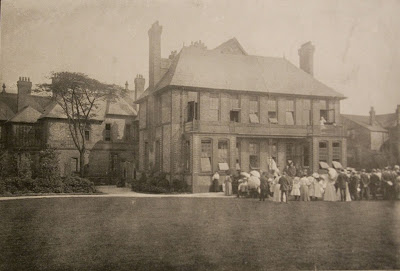Inside the Bethesda Home
We are returning to Bethesda on George Street this week to coincide with UK Disability History Month (UKDHM) 22 November – 22 December 2013. The aim this year is to explore the history of attitudes and how disabled people's lives have been marked by change.
 |
|
Bethesda, 1900
|
Before 1890, when Bethesda was first opened by the Manchester and Salford Boys’ and Girls’ Refuges and Homes, there was virtually no provision for children with disabilities. In fact the home was the first of its kind in Manchester. The building was originally owned by a Mr. Matthew Ferguson and was formally known as 'Woodside Cottage'.
The Manchester Courier described the home at its opening:
“On each side of the Central Hall are large day rooms for the children, warm and well-lighted and rooms of a similar character are provided on the first floor, in which are excellent beds on which the little inmates will sleep. The ascent of the children to these rooms will be facilitated by a hoist and the same apparatus will also be serviceable in other ways. The domestic arrangements are all that could be desired. In front of the institution is a large area for recreative purposes and under an amble veranda which stretched from the building are seats upon which those of the inmates who are debarred from active exercises can sit and enjoy the fresh air and warm sunlight. The heating and ventilating of the apartments is on a remarkably complete scale.”
 |
| New Annexe 1904 |

Comments
Post a Comment
Like to know more about a certain home or period in the Together Trust's history? Why not comment and let us know.
If you have a personal or more specific enquiry please see our 'Contact Us' section at the top of this page to get in touch via email.